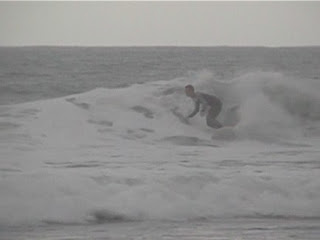Surfing a hull is different than surfing a multi-fin board. Contemporary foiled multi-finned boards are generally surfed off the tail, with the fins and hard edged bottoms they will hold a high line. Not so with a hull…
No, hulls won’t hold a high line. Saying that will bring questions to most like: Why would I want a board that won’t hold a high line.. that’s where the speed is? That’s a good question but to surf a hull it’s best to understand how a hull works.
There is a method to riding a hull that depends on your ability to maintain control of weighting your board in the right places down the wave face. Taking off you will slide down the wave face and weight into a turn at the bottom. After banking your board over on its rail and weighting into the turn you will drive your board down the line and because you stood up into your turn… weighted…. The board will climb up the wave face. As you come to the top of the wave you must un-weight the board so #1. it will stay with the wave and #2. if you’re on a lined up wall you won’t slip or spin out.
That first set of moves… take off, setting your edge, turn and climb give you a load of speed and once you’ve returned to the top of the wave you are ready to repeat the slide down the wave face setting your edge and climbing back up the wave face and gaining more speed.
There are many variations of where and how you will work your way along a wave face gaining speed, turning back, slowing down, riding in under and through white water but all the moves are dependent on maintaining control of weighting the board.
There is a method to riding a hull that depends on your ability to maintain control of weighting your board in the right places down the wave face. Taking off you will slide down the wave face and weight into a turn at the bottom. After banking your board over on its rail and weighting into the turn you will drive your board down the line and because you stood up into your turn… weighted…. The board will climb up the wave face. As you come to the top of the wave you must un-weight the board so #1. it will stay with the wave and #2. if you’re on a lined up wall you won’t slip or spin out.
That first set of moves… take off, setting your edge, turn and climb give you a load of speed and once you’ve returned to the top of the wave you are ready to repeat the slide down the wave face setting your edge and climbing back up the wave face and gaining more speed.
There are many variations of where and how you will work your way along a wave face gaining speed, turning back, slowing down, riding in under and through white water but all the moves are dependent on maintaining control of weighting the board.





No comments:
Post a Comment